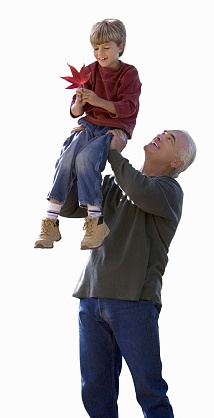 What Is Functional Training?
What Is Functional Training?
The term functional training is a mainstay in the current fitness/wellness vernacular, but what is it? In lay terms, it is training that supports movements that are performed in everyday life outside the gym, or that are naturally occurring movement patterns (whether or not you use them).
Where You See Functional Training
You encounter functional training anytime you are walking, running, pushing, pulling, twisting, or bending (almost every movement!). As Mike Blume, Athletic Performance Trainer at NIFS, puts it, “Functional training improves our activities of daily living (ADLs), which will then help us get through each day easier.” This improved quality of life could affect something as simple as tying your shoes, to playing with your children on the floor, to carrying your groceries to your second-floor apartment.
Choosing the Right Functional Training Movements
Not all functional training exercises are created equal. We find that exercises that are more specific or have a greater “transfer effect” can have a greater overall impact on the participant going as far as increased brain/muscle motor control). Exercises that are on the other end of the spectrum have a lower overall impact, however.
Preventing Functional Training Injury
We find the difficulty and complexity of an exercise must be taken into consideration and may be detrimental to a person’s health and wellness if they are not physically capable of performing the movement correctly. We all know that there is nothing functional about injury due to inexperience or physical limitation. See a NIFS fitness instructor or personal trainer to discuss functional training and how it applies to your workout level.
In part 2 of this two-part series, I'll look at lifting techniques for functional training.
Ready to get started on your road to fitness? We offer a free fitness assessment with no obligation to join! Click below to contact us and set up an appointment.
This blog was written by Thomas Livengood. For more about the NIFS bloggers, click here.

